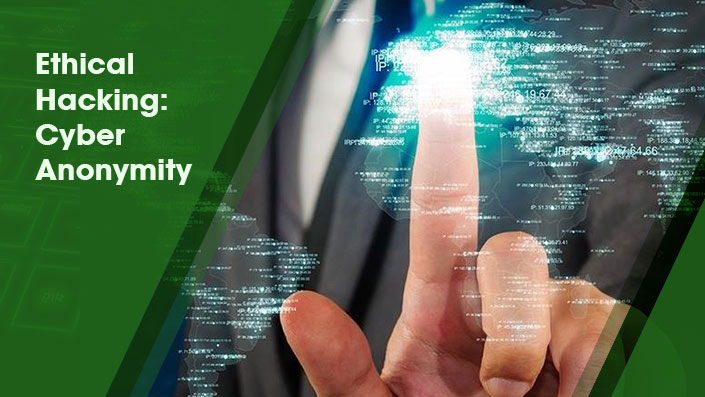About this course
In today’s digital world, privacy and anonymity are under constant threat. From hackers and surveillance to data breaches and corporate tracking, protecting your identity and securing sensitive information has never been more important. Cybersecurity professionals—and even everyday users—must understand how anonymization tools, encryption methods, and secure communication practices work to defend both individuals and organizations.
Anonymizers, Network Anonymity, and Data Privacy is a practical, hands-on course designed to teach you how attackers attempt to hide their tracks and how defenders can use the same techniques to strengthen security. You’ll begin by exploring anonymization tools such as Tor, Tortilla, VPNs, and Proxy Chains, gaining an understanding of how they conceal network traffic. Then, you’ll dive into network anonymity tactics such as ARP poisoning, ICMP tunneling, and frag routing, which attackers often use to mask activity and bypass detection.
The course then transitions into host and data privacy, where you’ll learn how to safeguard communications and data through email privacy measures, the TAILS operating system, data privacy practices, and multiple layers of storage encryption—including Windows Encrypting File System (EFS). Each module closes with exercises, ensuring that learners apply these concepts in a safe, ethical, and practical way.
By the end of this course, you’ll not only understand how anonymity and privacy technologies work but also how to implement them responsibly. Whether your goal is to pursue cybersecurity certifications, land an entry-level security role, or simply take control of your digital footprint, this course provides the skills and knowledge to get started. With demand for cybersecurity professionals growing rapidly, mastering these essential privacy techniques gives you a competitive edge in today’s job market.
Learning Objectives
By the end of this course, learners will be able to:
• Explain the role of anonymizers in protecting identity and traffic.
• Use Tor, Tortilla, VPNs, and Proxy Chains for anonymous browsing.
• Demonstrate ARP poisoning, ICMP tunneling, and frag routing.
• Identify privacy risks in email communication and apply countermeasures.
• Use TAILS for anonymous and secure system usage.
• Apply best practices for host and data privacy.
• Implement storage encryption methods, including Windows EFS.
• Evaluate anonymity and privacy strategies for both personal and organizational use.
Target Audience
• Beginners entering the cybersecurity field.
• IT professionals seeking hands-on skills in privacy and anonymity.
• Students preparing for certifications such as CEH, Security+, or CySA+.
• Anyone interested in protecting their digital identity and securing sensitive data.
Prerequisites
• Basic knowledge of networking and operating systems recommended.
• No prior cybersecurity experience required.
• A computer with internet access (Linux familiarity helpful but not required).
Anonymizers, Network Anonymity, and Data Privacy is a practical, hands-on course designed to teach you how attackers attempt to hide their tracks and how defenders can use the same techniques to strengthen security. You’ll begin by exploring anonymization tools such as Tor, Tortilla, VPNs, and Proxy Chains, gaining an understanding of how they conceal network traffic. Then, you’ll dive into network anonymity tactics such as ARP poisoning, ICMP tunneling, and frag routing, which attackers often use to mask activity and bypass detection.
The course then transitions into host and data privacy, where you’ll learn how to safeguard communications and data through email privacy measures, the TAILS operating system, data privacy practices, and multiple layers of storage encryption—including Windows Encrypting File System (EFS). Each module closes with exercises, ensuring that learners apply these concepts in a safe, ethical, and practical way.
By the end of this course, you’ll not only understand how anonymity and privacy technologies work but also how to implement them responsibly. Whether your goal is to pursue cybersecurity certifications, land an entry-level security role, or simply take control of your digital footprint, this course provides the skills and knowledge to get started. With demand for cybersecurity professionals growing rapidly, mastering these essential privacy techniques gives you a competitive edge in today’s job market.
Learning Objectives
By the end of this course, learners will be able to:
• Explain the role of anonymizers in protecting identity and traffic.
• Use Tor, Tortilla, VPNs, and Proxy Chains for anonymous browsing.
• Demonstrate ARP poisoning, ICMP tunneling, and frag routing.
• Identify privacy risks in email communication and apply countermeasures.
• Use TAILS for anonymous and secure system usage.
• Apply best practices for host and data privacy.
• Implement storage encryption methods, including Windows EFS.
• Evaluate anonymity and privacy strategies for both personal and organizational use.
Target Audience
• Beginners entering the cybersecurity field.
• IT professionals seeking hands-on skills in privacy and anonymity.
• Students preparing for certifications such as CEH, Security+, or CySA+.
• Anyone interested in protecting their digital identity and securing sensitive data.
Prerequisites
• Basic knowledge of networking and operating systems recommended.
• No prior cybersecurity experience required.
• A computer with internet access (Linux familiarity helpful but not required).
Ethical Hacking: Cyber Anonymity
1 Parts
Ethical Hacking: Cyber Anonymity
-

0
0 Reviews




